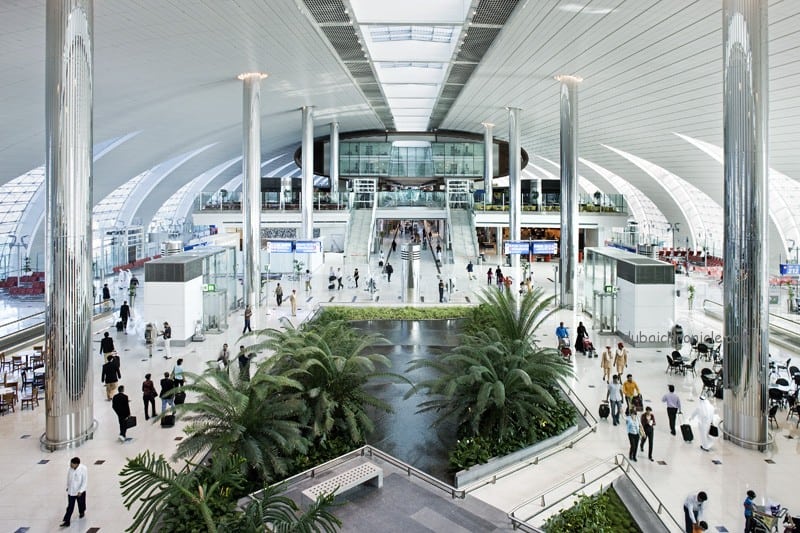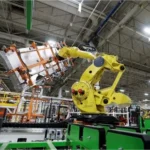Dubai’s ambitious plans for a state-of-the-art aviation hub at Al Maktoum International Airport (Dubai World Central – DWC) are moving forward with significant developments. One of the most notable features of this $35 billion project, which is expected to open by 2033, is an advanced underground train system designed to ensure fast and efficient passenger transfers within the massive terminal complex.
Massive Scale Requires Efficient Transport Solutions
Given the vast expanse of the planned airport, an underground train system is being considered as a vital component of the internal transportation network. Dubai Airports CEO Paul Griffiths, speaking at the Arabian Travel Market, highlighted that the size of the site necessitates a solution to minimize travel distances and reduce transfer times for passengers moving between flights.
“The internal transit time within the new terminal complex could reach 15 to 20 minutes, which is similar to a train ride between major stations in large cities, like King’s Cross to Paddington in London,” Griffiths explained. He emphasized that the underground trains would include seating to ensure passenger comfort during these relatively long transfers.
Read: Oman Air Implements Workforce Reductions Amid Restructuring
Existing Transport Challenges at Dubai International Airport
At present, Dubai International Airport uses an Automated People Mover (APM) system that connects Terminal 1 and Terminal 3. While functional, the current APM is a short ride, and its seating options are limited, particularly for older passengers, women, and children. In comparison, the planned underground train system for the new terminal aims to address these challenges with a more comprehensive and comfortable approach to moving large volumes of passengers over long distances.
“The sheer size of the new terminal means that internal transport will be a critical factor,” Griffiths said. “We need to make sure it’s quick, efficient, and competitive in terms of circulation, ensuring smooth transfer flows for passengers. That is why we have taken this step to introduce Underground Train System”.
Significant Progress and Contract Awards
Griffiths’ comments came shortly after Sheikh Ahmed bin Saeed Al Maktoum, Chairman of Dubai Airports, confirmed that work on the $35 billion passenger terminal project has begun. The Dubai government greenlit the Underground Train System project almost a year ago, and several key contracts have already been awarded to contractors involved in its construction.
Although Sheikh Ahmed did not specify the exact details of the contracts, Griffiths confirmed that Dubai Aviation Engineering Projects (DAEP), the organization overseeing the construction process of Underground Train System, has been managing the awarding of contracts for the new terminal’s development. Griffiths also noted that Dubai Airports is primarily focused on ensuring the terminal’s design meets operational criteria.
Also Read: World’s Largest Sovereign Wealth Fund Reports $40 Billion Q1 Loss Amid Tech Sector Downturn
Collaborating with Global Experts for Optimal Design
A major contract has been awarded to WSP, a global consultancy based in Canada, to evaluate the project’s operational design. This “concept of operations” phase will provide critical feedback on design efficiency and performance targets. Griffiths referred to the design process as “iterative” and stated that the ongoing review ensures the terminal’s design remains “fit for purpose.”
One of the key design philosophies behind the terminal is to avoid the inefficiencies of a single large airport with lengthy walking distances. Instead, the concept aims to create eight smaller, interconnected “mini-airports” within the larger airport. The goal is to maintain intimacy and ease of navigation, using advanced data techniques powered by AI to optimize operations.
AI Integration to Enhance Passenger Flow
Griffiths further explained how Underground Train System AI would play a pivotal role in managing passenger flow throughout the terminal. By analysing vast amounts of data, the AI system will optimize the placement of aircraft and direct passengers in ways that minimize walking distances and maximize efficiency. The AI will dynamically adjust to constantly changing data to ensure smooth operations, especially during transfer periods.
“For example, if you’re transferring from one flight to another, we want to ensure that all the aircraft involved in your transfer are positioned within the same concourse,” Griffiths elaborated. “This will minimize walking distances and streamline the entire transfer process.”
Aiming for a Customer-Friendly Environment
The overarching aim of the Al Maktoum International Airport project is to create a dynamic, agile, and customer-friendly environment with Underground Train System. By incorporating AI and other cutting-edge technologies, the goal is to eliminate the frustrations often experienced in large airports and provide a seamless and efficient travel experience for all passengers.
As the design and construction phases continue, the integration of the underground train system and AI-driven operational strategies will play a crucial role in establishing Dubai as a global leader in airport design and functionality. The project’s focus on speed, efficiency, and passenger comfort sets it apart as one of the most ambitious and forward-thinking aviation developments in the world.
Follow 10X Times for all business news updates.






